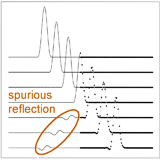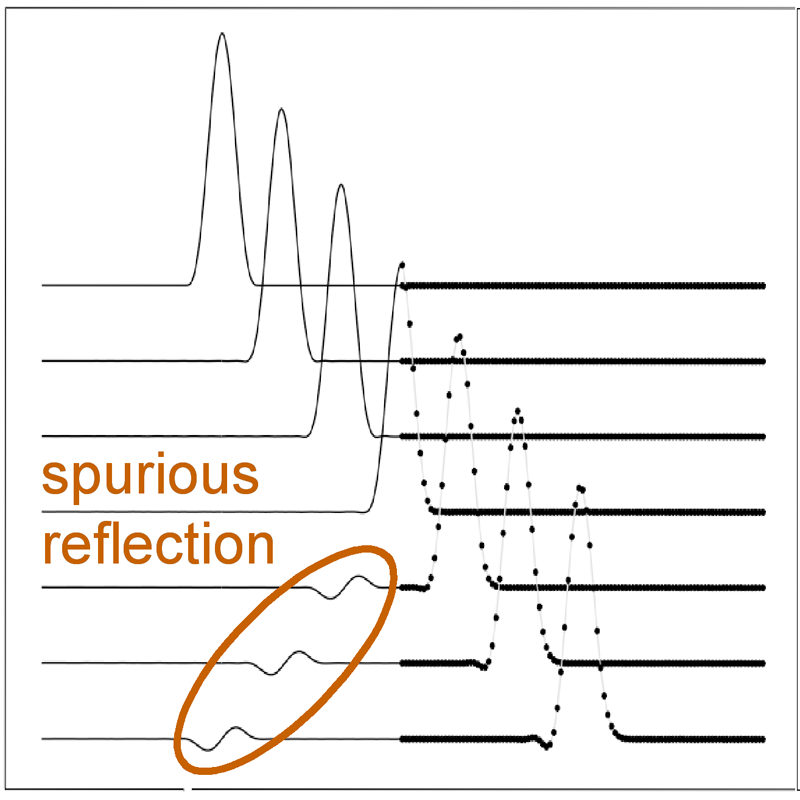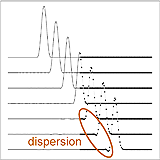Faculty: Duane Johnson (Materials Science & Engineering), Robert Haber (Mechanical Science & Engineering)


Sharp-interface coupling: solid modeled by atomistic region between two continuum zones.
Example below: Snapshots of right-traveling wave in a 1-D system comprised of linear-spring atomistic model coupled to elastic continuum. Wave starts in continuum zone; dispersion develops correctly in atomistic zone, as expected.


Above: non-optimal coupling -– energy and momentum balance, but left-traveling reflection is evident.
Other formats:


Above: Optimal coupling -- a 3-atom trace operator in SDG model largely suppresses spurious reflection.
Other formats:
Animations corresponding to this research are available at http://www.cpsd.uiuc.edu.
Objective
Reliable atomistic-continuum coupling method for dynamics of solids. While other methods use kinematic coupling in overlapping continuum and atomistic zones, we seek a sharp-interface model that enforces momentum and energy balance, as well as kinematic compatibility.
Issues
Continuum and atomistic models use distinct mathematical descriptions (local vs. non-local, continuous vs. discrete) for energy and momentum transfer in solids; we seek a coupling method that bridges these differences. Most coupling methods suffer spurious wave reflections at the continuum-atomistic interface (or damp them, removing energy from the system).
Approach
We use Spacetime Discontinuous Galerkin formulation with balance-law coupling as unifying mathematical framework. Our method balances energy and momentum – both globally and locally at coupling interface. We can use any standard linear or non-linear potential to define the atomistic model. We optimize a new atomistic trace operator to suppress spurious reflections.
Impact
Computer simulations play central role in analysis, prediction and design of structural, energy and biomaterials. Our method will permit long-duration and accurate simulations of coupled systems when implemented within an adaptive SDG software framework.
Publications
A paper about this work was submitted to the Journal of Computational Physics (2007).
This material is also available as a Powerpoint slide.

![]()

